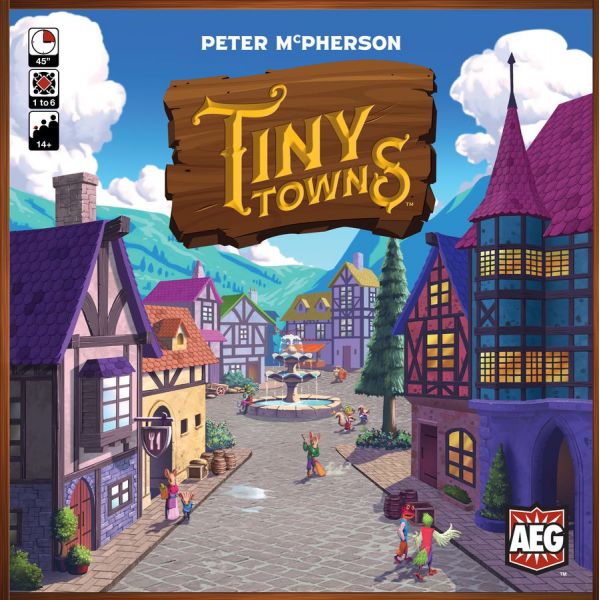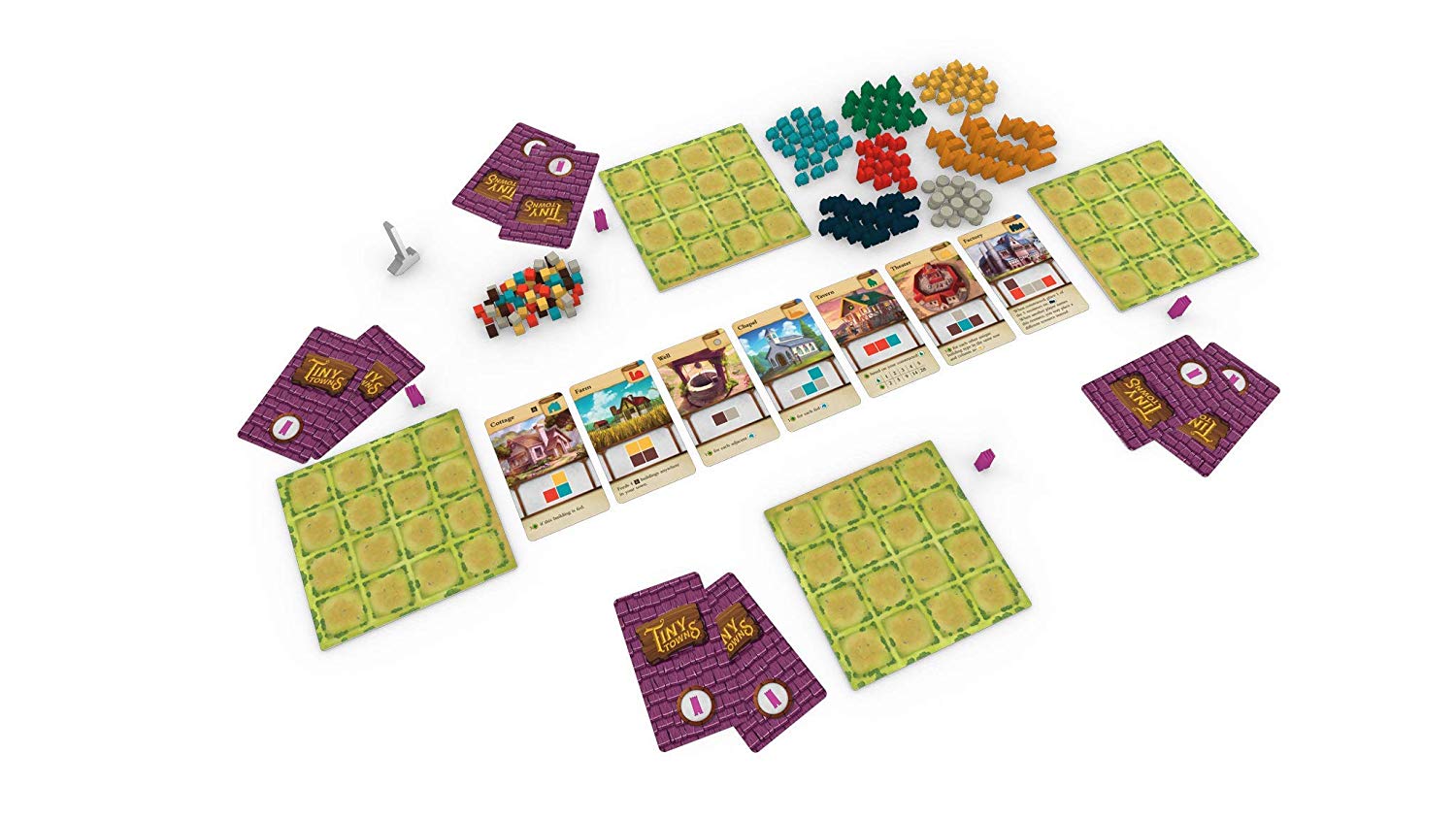Build a Small Hamlet with Tiny Towns

Properly arrange your village with polyomino precision in Tiny Towns, a new game published by Alderac Entertainment Group (AEG).
Gameplay
Tiny Towns is a 1 to 6 player game (though, with enough copies of the game, hundreds of people can play at once) that takes its cues from the recent roll and write explosion without a single die or pencil in sight. The game is very basic, with a row of seven community cards displayed for everyone to use for guidance. Each card represents a unique building with their own requirements for players to fulfill. Players are also dealt two monument cards before play begins, choosing which one they want to work toward while discarding the other.
Players, denoted as Master Builders, will take turns calling out one of the resources (wheat, glass, brick, stone, and wood) used in the game to create buildings, and using a similarly colored cube will place them on their own player boards — in this case a 4 by 4 grid that represents their towns. As players place cubes, they try to match the shapes on each building within the community cards to complete them. Once a building or a monument is complete, the cubes return to the resource pile and are replaced by the wooden building idol represented on the card. This building, representing what’s on one of the building cards, can occupy any one space in the town that had a cube on it to form that building.
The buildings provide different scoring or play conditions that will trigger depending on what types of buildings are created in one’s town, and how they are placed. The game ends when no one can place any more cubes and cannot complete anymore buildings. Points are added up and the winner is determined.

Review
Tiny Towns is the definition of a casual game that has more depth than it initially seems because of how simple and quick it plays. Aside from the Cottage card, the other six building cards can be swapped for other cards in similar categories. It is recommended that in the first game, everyone uses the Factory card. However, the Factory can be replaced by the Bank, Trading Post, or Warehouse in subsequent plays. While the community cards can only contain one of each “type” of building, the pairings of these buildings out the gate provide some variability in building and scoring from game to game.
Another layer of difficulty comes with placing the cubes and buildings throughout the game. At first, a player’s board will be wide open and allow for maneuverability. However, as buildings are placed, and space becomes limited, players must think about what they can complete and what best optimizes their scoring potential. Any empty squares in one’s town (places where no buildings are placed) count as negative points at the end of the game.
However, it may be difficult to see this variety upon one’s first play of the game. The game recommends a beginner’s set up of seven building cards and they are rather bland. Wheat is hardly used as a resource, so it’s unlikely it will be called out as often from other players if someone is focused on a farms and cottages strategy, so turns in a multiplayer game become predictable. In a solo game, a deck of cards is used rather than the solo player calling out resources. However, even with the ability to have a pool of three cards to choose from, each resource is represented equally and it’s easy to get stuck with three of the same resources so one must adapt to the populated board in the middle or late into the game.
The good news is some of this will be remedied with an expansion. The bad news is this will be remedied with an expansion, leaving some frustrated at a lack of options at the end of the game because of a bad draw or another player’s strategy runs anathema to their own.
That said, Tiny Towns would suffer if it gave into the whims of players wanting to build to their own specifications. These rules, which are freeing at first and constrictive as the game winds down, are the challenge to overcome. Outsmarting a Master Builder who may be using their turns to needle the other players is also a challenge in and of itself. There is a reason this game, with enough copies, can stretch to meet a player count well into the hundreds. It fits snuggly in between a game with just enough interaction and isolation so that a player must pay attention to others but also be mindful of their own strategy and willing to adapt as necessary. It’s no wonder Tiny Towns has had the impact it has.
Pros: Easy to learn, light yet strategic, surprising depth and complexity, fits high player counts
Cons: Not enough scoring and playing variety in the building cards




